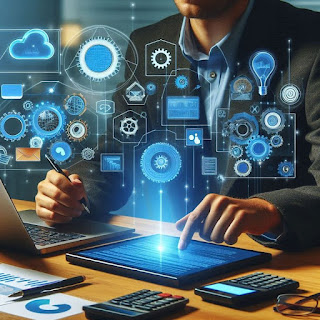ERP & IoT 🌐🤖: The Future of Connected Business Operations
The fusion of Enterprise Resource Planning (ERP) and the Internet of Things (IoT) is reshaping how businesses operate, manage assets, and make decisions. This powerful combination allows for real-time data exchange between physical devices and centralized ERP systems, leading to greater automation, insight, and control 🚀.
But what happens when machines "talk" to your ERP? Let’s explore how IoT is enhancing ERP systems across industries.
🔧 What is IoT-Enabled ERP?
IoT refers to interconnected devices—like sensors, machines, vehicles, and equipment—that collect and transmit data over the internet 🌐. When integrated with ERP, this data flows directly into business systems, providing real-time insights without manual input. Imagine a warehouse where shelves notify the ERP when stock runs low 📦📉, or a machine alerts the system before it breaks down 🛠️⚠️.
This seamless exchange enhances accuracy, speeds up workflows, and reduces downtime.
📈 Key Advantages of ERP + IoT Integration
-
Real-Time Monitoring ⏱️
IoT devices continuously track performance, inventory, and logistics. ERP systems instantly reflect this data, ensuring up-to-the-minute accuracy. -
Predictive Maintenance 🧠🔍
Sensors on machines detect anomalies before failure. ERP then schedules maintenance automatically, reducing unplanned downtime and repair costs. -
Enhanced Supply Chain Visibility 🚚🔄
From tracking shipments in transit to monitoring warehouse temperatures, IoT gives complete visibility into every step of the supply chain. -
Improved Efficiency ⚡
Automation of manual tasks (like scanning barcodes or recording usage) streamlines operations and reduces human error.
🏭 Industry Applications
-
Manufacturing 🏗️: Smart machines share real-time data with ERP systems, helping in production planning and quality control.
-
Logistics 🚛: IoT trackers monitor vehicle health, route efficiency, and cargo conditions, all feeding into ERP for smarter logistics.
-
Agriculture 🌾: Sensors in the field track soil conditions and feed data into ERP to optimize water and fertilizer use.
-
Retail 🛍️: Smart shelves and RFID tags alert ERP systems of stock levels, triggering automatic restocking processes.
⚠️ Challenges of Integration
-
Data Overload 📊: IoT devices generate huge volumes of data. Without proper filtering, ERP systems can become overwhelmed.
-
Security Concerns 🔐: Every connected device is a potential vulnerability. Strong encryption and network protocols are essential.
-
Integration Complexity 🔧: Merging IoT data with existing ERP platforms can require significant customization and investment.
🔮 Future Outlook
As 5G, AI 🤖, and edge computing grow, ERP and IoT will become more intertwined. Systems will predict not just machine failure, but also market demand, weather impacts, and customer behavior — all in real time 🌟.
Imagine a farm where soil sensors trigger ERP-based irrigation only when needed 🌦️, or a store that adjusts pricing based on foot traffic and temperature. These aren’t dreams — they’re the next reality.
✅ Conclusion
ERP + IoT = Smarter, Faster, and Greener Business 🌍💡. By connecting physical assets to digital intelligence, companies gain unmatched control over operations. Embracing this duo now means staying ahead in tomorrow’s competitive landscape. 💼📶
For more insights visit quantazone.




Comments
Post a Comment